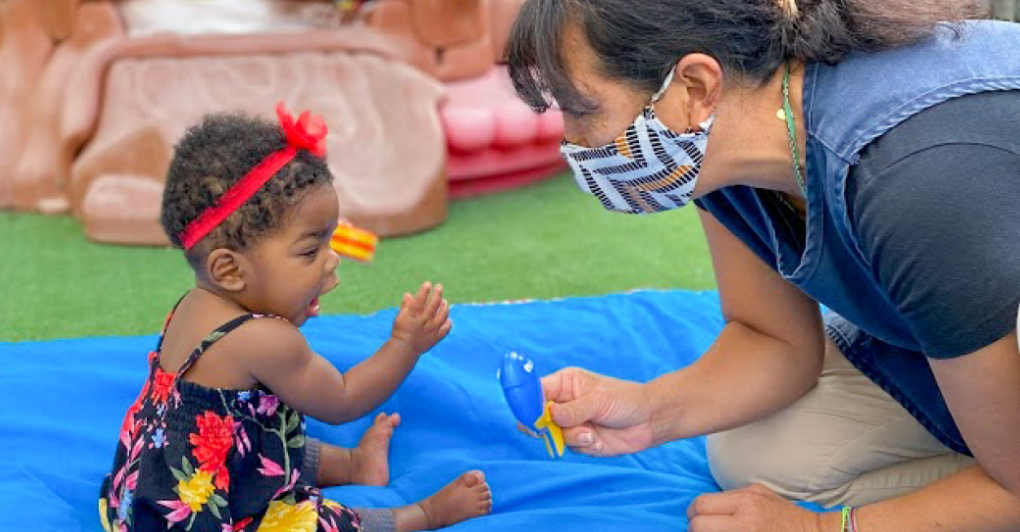Few would question that 2020 was a challenging year, with COVID-19 disrupting just about every aspect of our day-to-day lives at home, at work and everywhere in-between. Included in that “in-between” is child care – an essential service for so many parents and children that continues to be significantly impacted by the pandemic. After an array of differing state approaches to closings in the early days of the pandemic, child care centers across the country have been gradually re-opening. Now recognized more clearly than ever before as essential to parents and children alike, significant attention is being directed towards not only the re-opening of child care centers, but the question of how best to do so safely.
I wish there was an easy answer for when it’s safe for children to return to child care, but there are several factors to consider. A good place to start is the recognition, as stated by the American Academy of Pediatrics, that:
“early care and education…offer a supportive learning environment for healthy child development as well as a foundation of services for young children and their families.”
We know that access to quality early education and child care isn’t just a convenience, but supports healthy child development, parent and child well-being, and important social connections for children and families. Given the clear benefits, the question becomes a matter of how to make the return to child care as safe as possible for children and families — a task that involves limiting the spread of the virus.
As a parent, pediatrician and former owner of a Primrose school, I will be the first to admit that the idea of effectively keeping viruses from spreading in child care – the novel coronavirus or any others for that matter – initially may seem a bit unrealistic. But in this regard, there are actually two factors that work in our favor:
- Existing and enhanced health and safety measures help keep children and staff safe.
Even before this new coronavirus showed up, an array of common viruses have routinely made their way into child care settings. As a result, many simple yet effective measures like hand hygiene and disinfecting frequently touched surfaces have long been established to combat them. Take handwashing, for example. Even very young children can be and are routinely introduced to the basic concepts involved in handwashing, from learning about germs and the ability of soap and water to wash those germs off to which song to sing to ensure they wash long enough. Of equal importance, a well-run child care center offers the benefit of consistent routines that allow children to not only learn about hand–washing, but get hands-on experience putting what they’ve learned into practice. Similarly, protocols and enhanced measures like health checks, having anyone (children or providers) experiencing symptoms stay home, limiting who comes in and out of the center, and mask-wearing all serve as ways to significantly limit the likelihood of viral spread.
As simple as all these strategies may seem, the fact of the matter is that when implemented in the child care setting, handwashing, disinfecting, staying home when sick and keeping one’s respiratory droplets to oneself (i.e. mask wearing) really do work to reduce the spread of viruses. Of course, it would be great if the word “reduce” could be replaced with the word “eliminate.” Great… but unrealistic given how wily viruses are. Because there’s only so much we can do to stop the spread of viruses, the sharing of them amongst close contacts and friends has always been and will continue to be a fact of life in child care.
- Young children don’t seem to be a significant source of spread.
Fortunately, in the case of COVID-19, there is also a second factor that seems to be working in our favor. Young children simply do not seem to be contributing nearly as much to the spread of COVID-19 in comparison to other viruses. It’s not that they don’t spread it at all, or even that they aren’t at risk of getting sick from it. Rather, over the course of the COVID-19 pandemic, young children simply haven’t proven to be the significant source of spread that was originally predicted. Contrary to what is typically the case when it comes to the sharing of viruses in the child care setting, young children don’t seem to be the ones sharing this particular virus with friends and then bringing it home to their families to the extent initially anticipated.
Child care benefits young children.
The benefits to young children attending quality child care extend well beyond simply keeping them safe from harm. In fact, the earliest years of life represent an especially critical window of opportunity when it comes to the development of foundational social-emotional and cognitive skills. Research also strongly reinforces that it is through consistent, everyday interactions with caring, responsive adults that these foundational skills are cultivated and strengthened – right down to the connecting of neurons in the developing brain.
So where does that leave parents faced with the decision of when to send their children back to child care? I suggest starting with the acknowledgment that nothing about the pandemic is ideal, and then making a point to look for centers committed to doing what they can to limit viral spread as you consider the benefits for both you and your children.
While the time it takes for the world to get the pandemic under control is mostly out of our hands, what all of us as parents do have in our control is the ability to provide our children with as safe and nurturing environment as possible. For those who look to and rely on child care in the time of COVID, this means taking some extra COVID-combatting considerations into account before leaving your children in the clean and capable hands of caring, responsive and appropriately masked childcare providers.
Related articles and resources to help you find the right child care for your family:
- During an Unprecedented Pandemic, Did I Make the Right Choice for My Children?
- A Child Development Approach That Takes the Pressure Off Parents
- Your Family’s Guide to Childcare
- How to Find the Best Child Care for Your Family
Find a Primrose School Near You
Inspire a lifelong love of learning. Contact your local Primrose to schedule a tour.
Find A School






